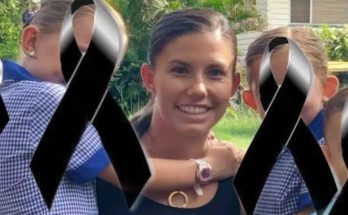A photographer captured a harrowing image of a young girl trapped after a volcanic disaster but did not try to help her.
The eruption of Nevado del Ruiz in Colombia in 1985 was the worst natural disaster the country has ever seen, as the volcano had not erupted for 69 years.
Volcanological organizations had warned the government to evacuate the area after detecting volcanic activity two months earlier, however, their lack of response cost thousands of lives.
As pyroclastic flows descended the sides of the volcanos, it caused mudflow (called lahars) and landslides at 30 mph, as it picked up even more speed it engulfed the town of Armero.
Although it was not considered a large eruption, the heat melted the snow and ice from a glacier capping the volcano. As per Earth Magazine, it unleashed three lahars, a mixture of rock, volcanic debris, mud, and water.
However, a photographer who captured the final moments of one of the victims did nothing to help – and now, he’s explained his decision not to intervene.

This story has left the internet feeling emotional, with one commenter writing: “I’m in tears I’ve never heard about this, reading the comments about it, is breaking my heart. I pray she is resting with the lord and I pray her last hours weren’t as painful as the beginning. Goodbye now as I go and bawl my eyes out.”
“I too am devastated by this picture, it is very haunting. Since this was in 1985 could not be a helicopter team have got to her? These actions are seen in movies but coming to real life is relentless?” questions a second.
A third adds: “I remember this so clearly, I was probably her age, following the news. Very tragic!”
The eruption of Nevado del Ruiz killed 20,000 of the 29,000 residents that inhabited the town.
The impact from the disaster also affected neighboring towns, bringing the total death toll to between 23,000 and 25,000
Relief workers were unable to reach Armero until 12 hours after the natural disaster had occurred, on 13th November.
Heartbreakingly, a 13-year-old girl named Omayra Sánchez Garzón, had been left trapped after the lahars destroyed her home and was stuck under the debris.

Omayra was unable to move and was left in a neck-deep pool of muddy water.
Volunteers had heard the young girl’s cries for help, they found her trapped by the body of an aunt and pinned by a wall, as per The New York Times.
Firefighters, volunteers, and many others from the surrounding areas attempted to dig and pry the 13-year-old free.
They even tried to move her dead aunt, but her arms were reportedly entangled around Omayra’s legs.
Red Cross workers had asked the government for a pump to help lower the water level in another attempt to free her.
There are reports that there had been conversations about potentially amputating her legs but it became clear that this would not be an option as they did not have the facilities.
Journalists, Red Cross workers, and other volunteers stayed with the young girl to keep her company, and French photojournalist Frank Fournier was one of those who sat with her.

He took a photo of Omayra which ended up being shown across the world.
It came to be seen as the image of the disaster, and Fournier won World Press Photo of the Year in 1986 with the picture of the girl.
The heartbreaking image shows Omayra submerged in the muddied water with only her hands and head above.
Her wrist had been tied to a piece of wood she had been holding onto in an attempt to help.
Fournier told the BBC: “She had been there for almost three days. Dawn was just breaking and the poor girl was in pain and very confused.”
He continued: “All around, hundreds of people were trapped. Rescuers were having difficulty reaching them. I could hear people screaming for help and then silence – an eerie silence. It was very haunting.”
Part of Fournier’s photograph that is most haunting is that Omayras eyes appear to be black.
This was due to the pressure of her legs being trapped and the cold water, which had made her eyes severely bloodshot.
Many criticized the photographer for capturing the moment and sharing it rather than helping Omayra in her harrowing final moments.

Fournier responded to the backlash, he said: “There was an outcry – debates on television on the nature of the photojournalist, how much he or she is a vulture.
“But I felt the story was important for me to report and I was happier that there was some reaction; it would have been worse if people had not cared about it.
“I am very clear about what I do and how I do it, and I try to do my job with as much honesty and integrity as possible.”
Rescue efforts were extremely difficult due to the mud, which meant it was impossible to help without becoming stuck.
Heartbreakingly they were unable to save Omayra, she passed away on 16th November after being trapped for 60 hours, likely from gangrene or hypothermia.
Fournier said: “When I took the pictures I felt totally powerless in front of this little girl, who was facing death with courage and dignity. She could sense that her life was going.
“I felt that the only thing I could do was to report properly on the courage and the suffering and the dignity of the little girl and hope that it would mobilize people to help the ones that had been rescued and had been saved.
“I felt I had to report what this little girl had to go through.”


